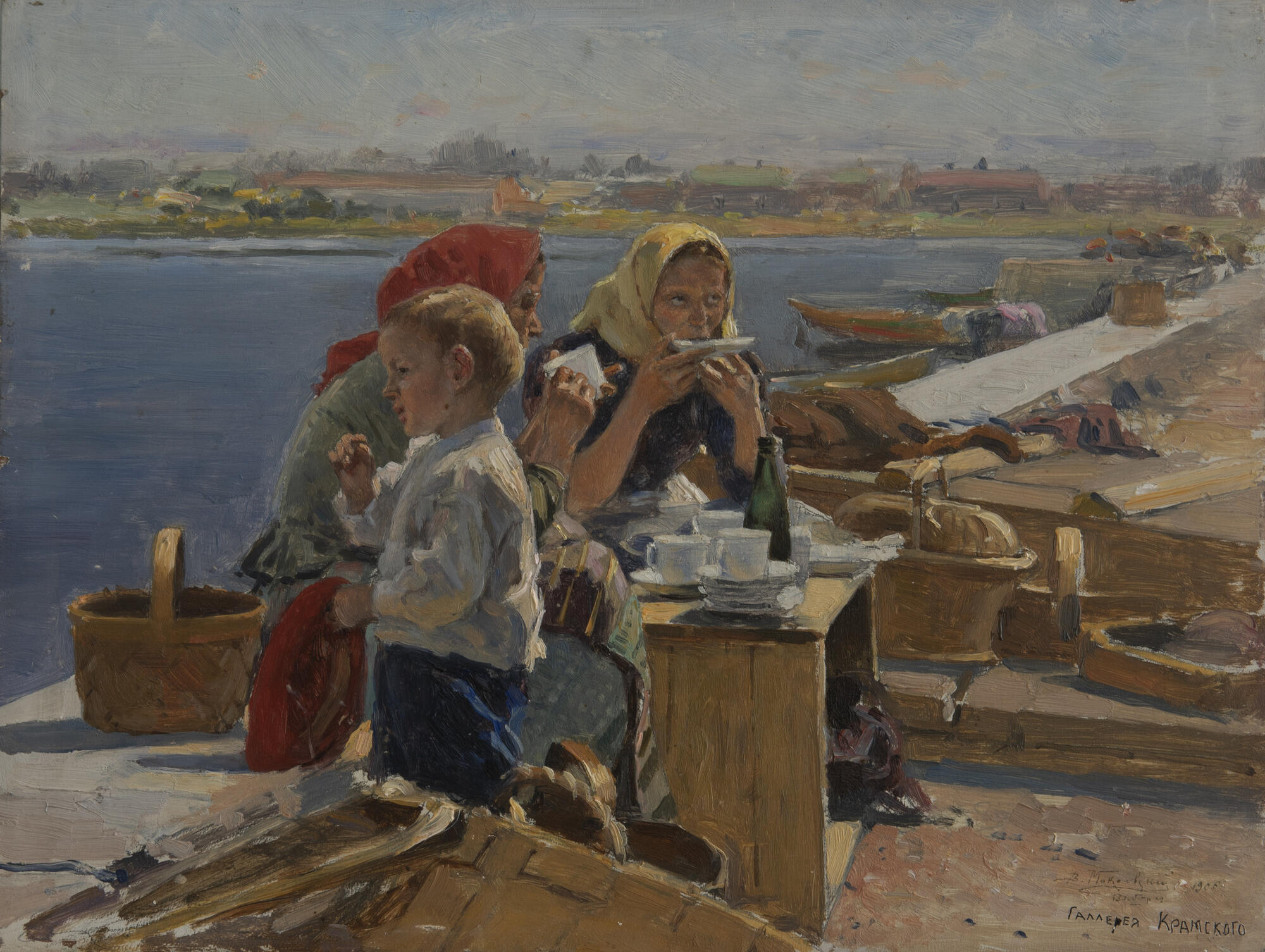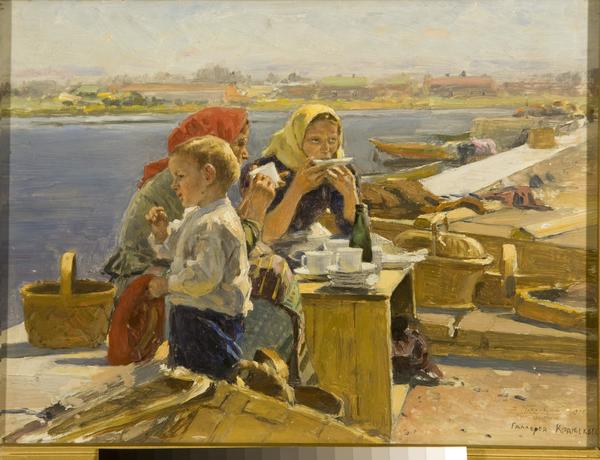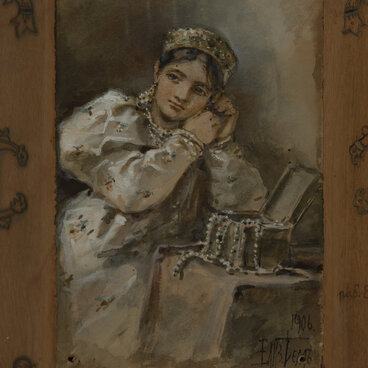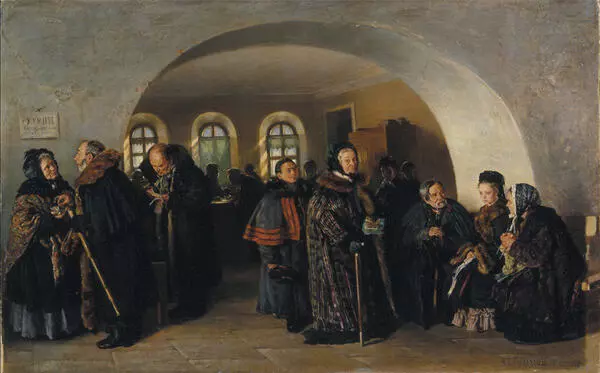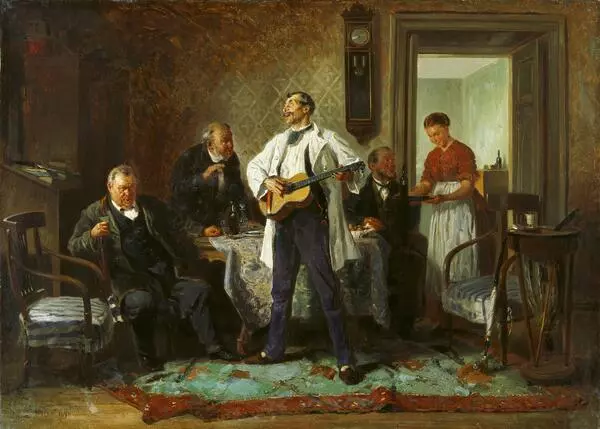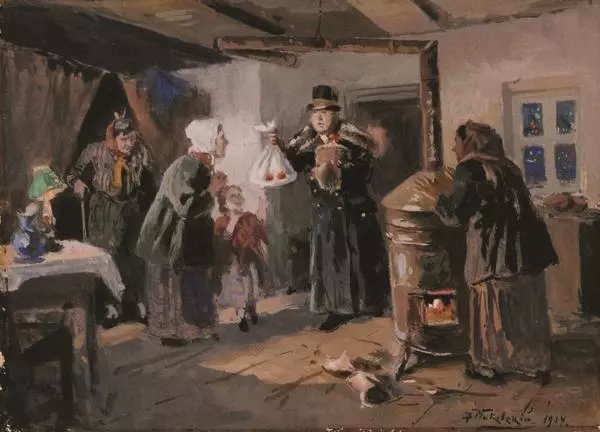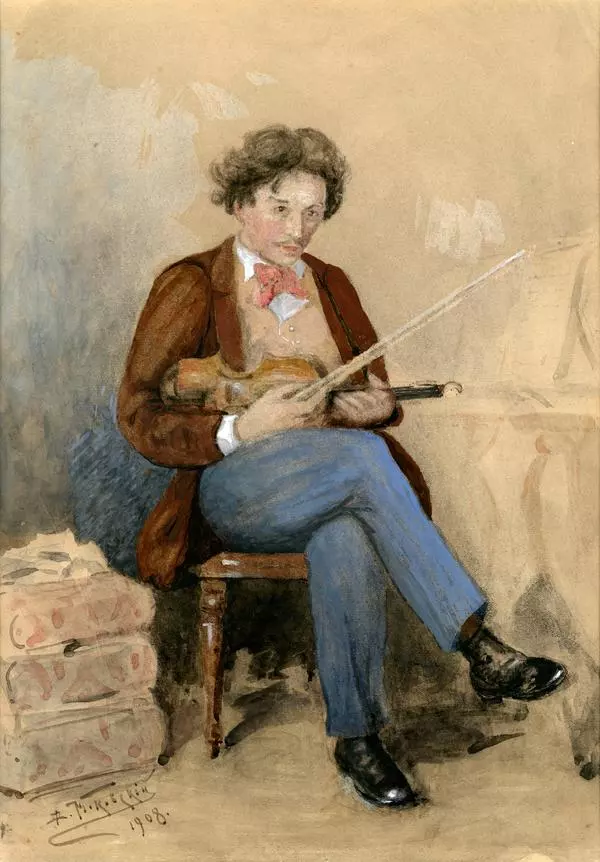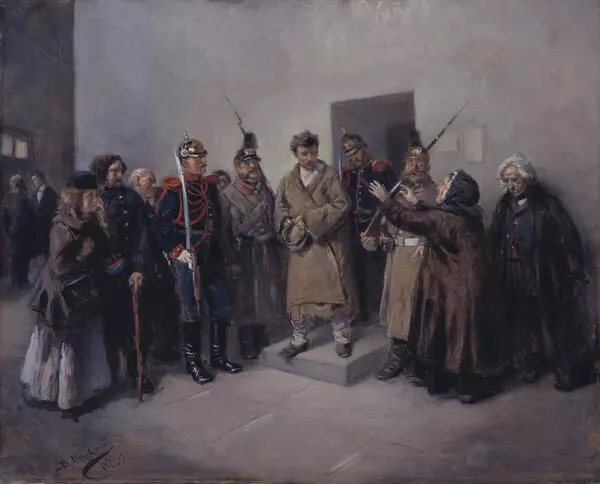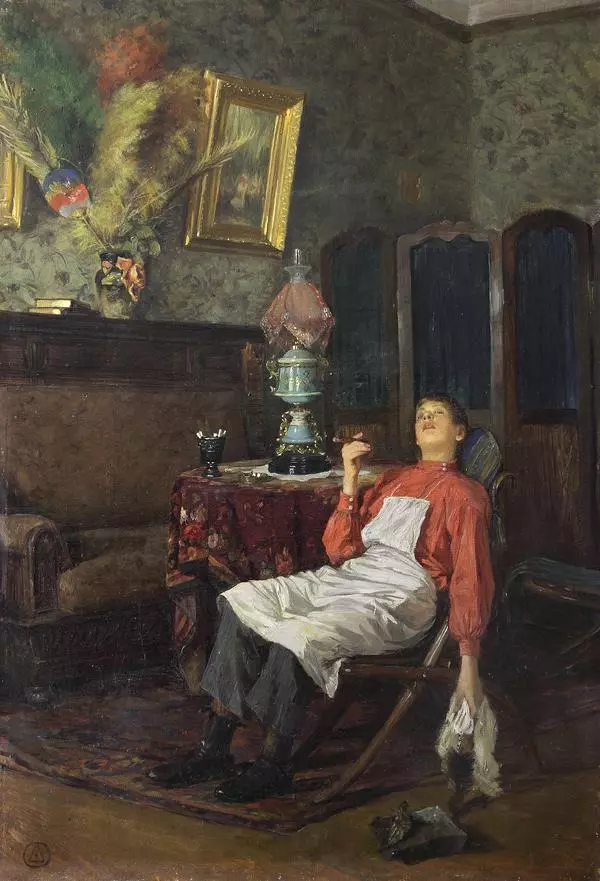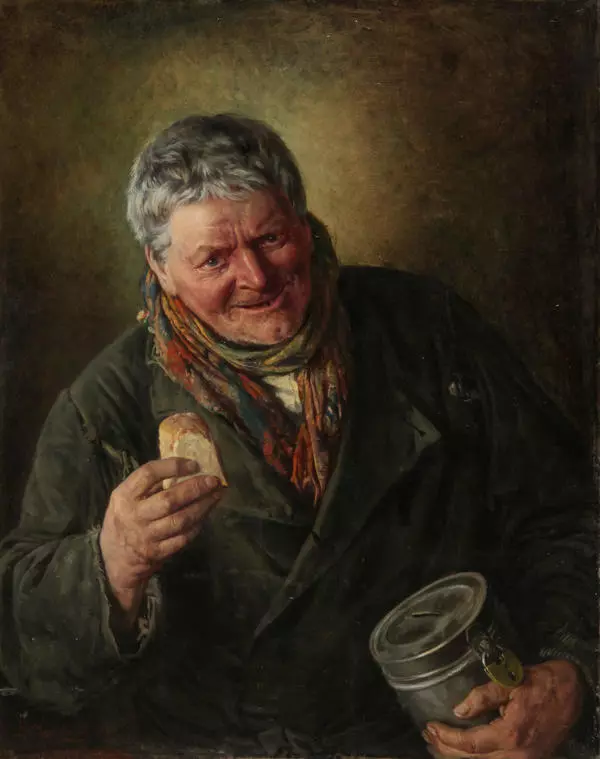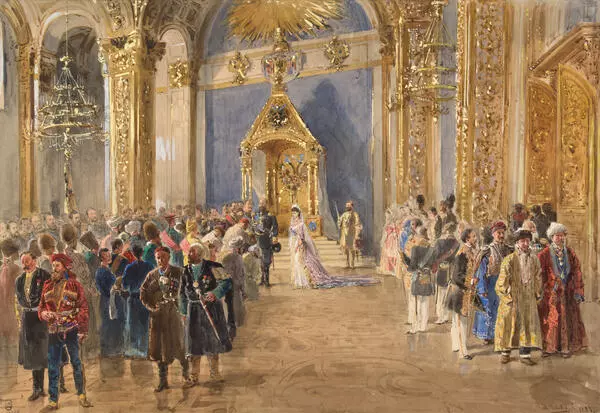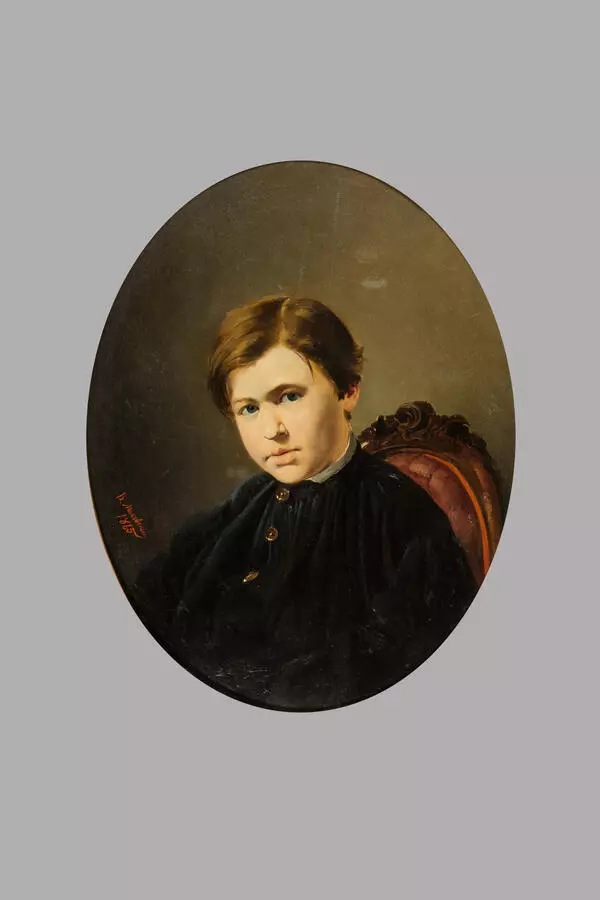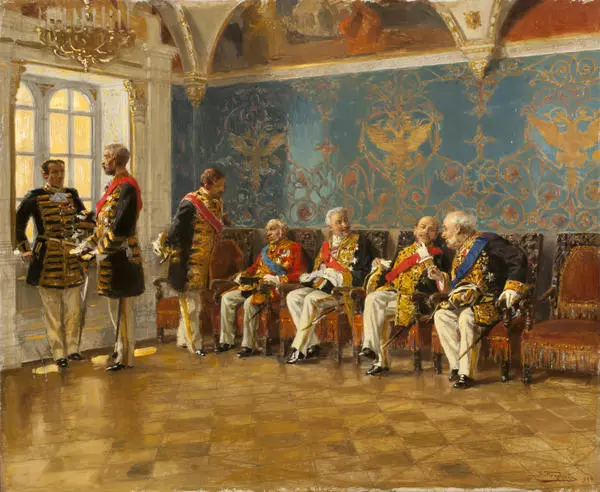The painting “Vyborg Embankment” by Vladimir Makovsky is rightly considered one of the gems of the Ostrogozhsk Museum of History and Art. This simple genre scene soaked with summer sun and serenity holds the attention and seems to fill the surroundings with warm and humid air as well as the indescribable charm of simple joys. The painting was donated to the museum by the artist himself.
Vladimir Egorovich Makovsky (1846–1920) was born into a family of creative intellectuals in Moscow: his father was one of the founders of the Moscow School of Painting, Sculpture and Architecture, and his brothers also became artists, having absorbed the love of art since early childhood. Vladimir Makovsky created his first painting at the age of seven, and diligently copied etchings under the supervision of his father. Moreover, the boy was fond of music: together with his mother Lyubov Kornilievna, a singer and teacher at the Moscow Conservatory, he studied music, played the guitar, and sang well.
Vladimir Makovsky was one of the founders of the Society for Traveling Art Exhibitions and a member of its management. A master of genre painting and portrait, he created many paintings inspired by the life of ordinary people and by literary works. In 1873, for his work “Nightingale Lovers” Makovsky was made a member of the Academy of Arts. The painting was displayed at the Vienna World’s Fair where it attracted a lot of attention.
Having embraced the philosophy of the Wanderers, Makovsky became a member of the management at the Society for Traveling Art Exhibitions and one of the most active participants of that organization. His works were in line with the main goal of the Wanderers — to show all the aspects of the life in Russian society. He reminisced, “Repin says that you should die seven times before you can create a painting. This is true but… I die seven times after I create a painting… Because the painting travels across Russia, and whatever Russian people say is most important — this is the only thing that matters!”
Like most artists, Vladimir Makovsky worked a lot and had to earn his daily bread. He painted vases and lamp shades, iconostases of domestic churches, and illustrated magazines.
Vladimir Egorovich Makovsky (1846–1920) was born into a family of creative intellectuals in Moscow: his father was one of the founders of the Moscow School of Painting, Sculpture and Architecture, and his brothers also became artists, having absorbed the love of art since early childhood. Vladimir Makovsky created his first painting at the age of seven, and diligently copied etchings under the supervision of his father. Moreover, the boy was fond of music: together with his mother Lyubov Kornilievna, a singer and teacher at the Moscow Conservatory, he studied music, played the guitar, and sang well.
Vladimir Makovsky was one of the founders of the Society for Traveling Art Exhibitions and a member of its management. A master of genre painting and portrait, he created many paintings inspired by the life of ordinary people and by literary works. In 1873, for his work “Nightingale Lovers” Makovsky was made a member of the Academy of Arts. The painting was displayed at the Vienna World’s Fair where it attracted a lot of attention.
Having embraced the philosophy of the Wanderers, Makovsky became a member of the management at the Society for Traveling Art Exhibitions and one of the most active participants of that organization. His works were in line with the main goal of the Wanderers — to show all the aspects of the life in Russian society. He reminisced, “Repin says that you should die seven times before you can create a painting. This is true but… I die seven times after I create a painting… Because the painting travels across Russia, and whatever Russian people say is most important — this is the only thing that matters!”
Like most artists, Vladimir Makovsky worked a lot and had to earn his daily bread. He painted vases and lamp shades, iconostases of domestic churches, and illustrated magazines.
